Think you can handle the creepy crawlies of Texas? Think again.
Texas is home to some of the most fascinating—and downright terrifying—spiders you’ll ever encounter. From the massive Texas brown tarantula to the venomous black widow, this state has it all. If you’re brave enough to venture into the wilds or even your own backyard, you’ll want to know which arachnids are friendly and which ones you should avoid at all costs.
While some spiders are harmless and even beneficial, others pack a dangerous punch. Whether you’re hiking in the woods or sitting on your porch, knowing what’s lurking nearby is crucial.
Get ready to learn about 18 creepy critters that call Texas home. We’ll help you sort the harmless from the hazardous so you can enjoy the Lone Star State—without a spider bite ruining your day.
Brown Recluse Spider
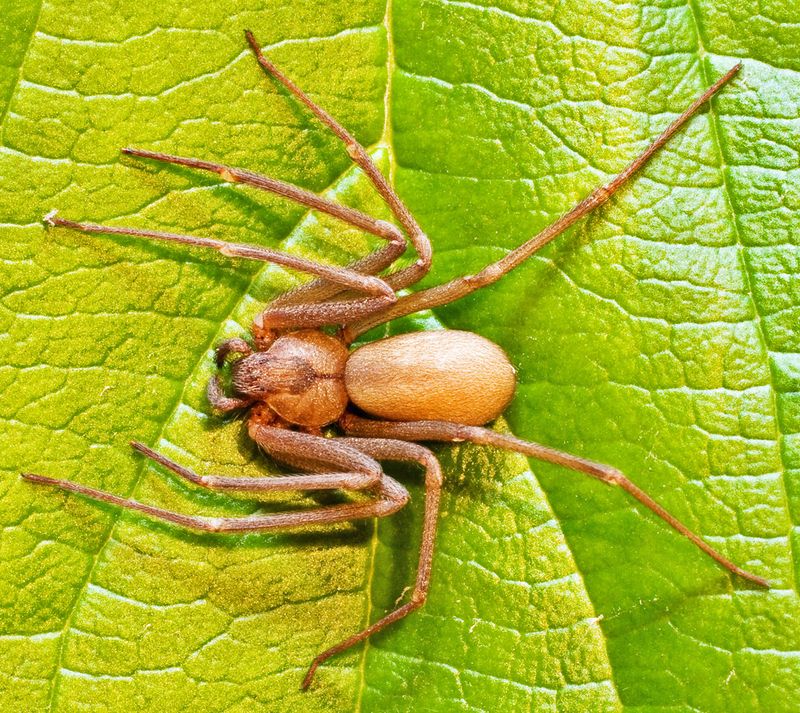
In the shadows of Texas homes lurks the infamous Brown Recluse Spider. Known for its venomous bite, this spider’s violin-shaped marking sets it apart. It prefers dark, undisturbed areas, making closets and attics its favorite hideouts. While bites are rare, they can cause serious reactions that require medical attention.
Despite its reputation, the Brown Recluse avoids human interaction. Its nocturnal nature ensures it stays hidden during the day. If you suspect an infestation, professional pest control is recommended. Always exercise caution in spider-prone areas, and remember that not all spiders wish to be found.
Black Widow Spider
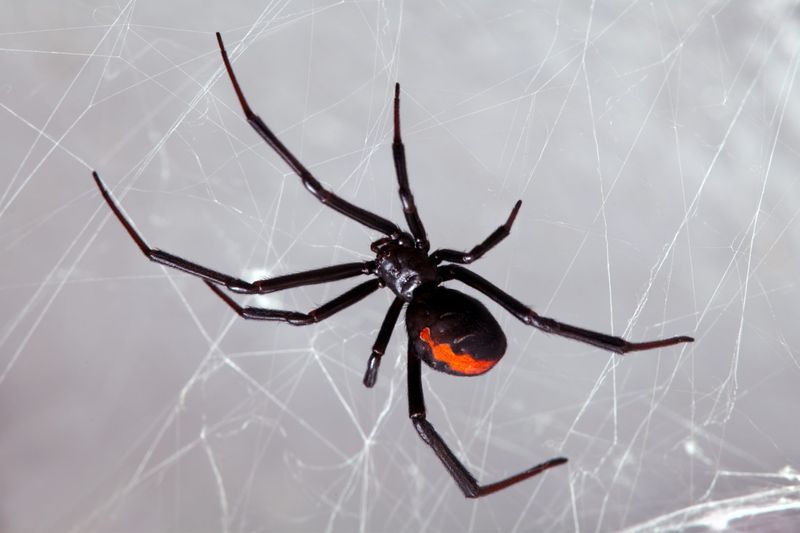
With its glossy black body and vivid red hourglass marking, the Black Widow Spider commands attention and caution. This notorious spider frequents Texas gardens and sheds, weaving irregular webs. Although bites can be painful, they are rarely fatal thanks to modern medical treatments.
The Black Widow’s shy demeanor means it usually bites only in self-defense. It’s essential to wear gloves when gardening and to inspect outdoor furniture for webs. Appreciating its beauty from a distance is wise, as this spider is a master of surprise and stealth.
Texas Tan Tarantula
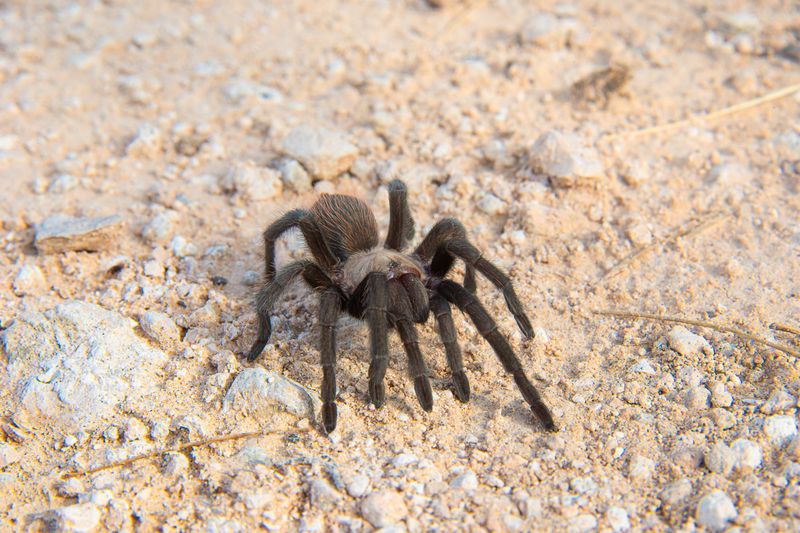
Imagine a gentle giant roaming the Texas deserts – that’s the Texas Tan Tarantula for you. Despite its intimidating size, this tarantula is quite docile and rarely poses a threat to humans. Its tan and brown hues blend perfectly with the arid landscape, making it a unique sight.
During the summer, males wander in search of mates, often crossing paths with curious observers. While its bite is comparable to a bee sting, the Texas Tan Tarantula prefers fleeing to fighting. A respectful distance allows for peaceful cohabitation with this remarkable arachnid.
Jumping Spider
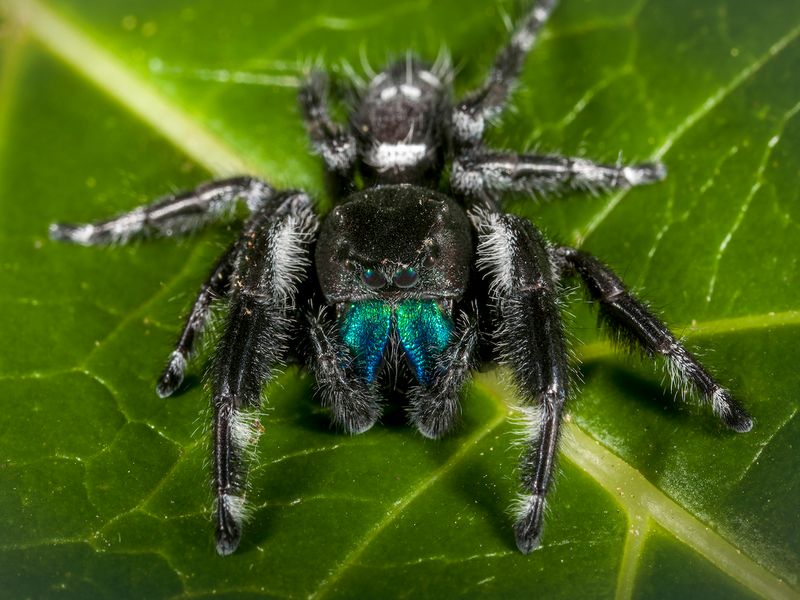
Jumping Spiders are the acrobats of the arachnid world, with over 300 species calling Texas their stage. Their keen eyesight and ability to leap distances make them remarkable hunters. These spiders are typically harmless, posing no threat to humans.
Their curious nature often brings them indoors, where they explore surroundings with expressive eyes. Watching a Jumping Spider can be a delightful experience as it inspects its environment. With patience, you might witness its signature leap, a testament to its agility and charm.
Wolf Spider

In the world of Texas arachnids, the Wolf Spider stands out as a fierce predator. Unlike web-spinners, this spider hunts its prey with keen vision and speed. Its robust body and unique eye arrangement make it easily recognizable.
Wolf Spiders are often found in grasslands and forests, where they roam freely. Although their appearance might be intimidating, they are not aggressive towards humans. Their bites are rare and usually harmless. Observing a Wolf Spider’s hunting prowess is a glimpse into nature’s raw beauty, demanding respect rather than fear.
Garden Spider
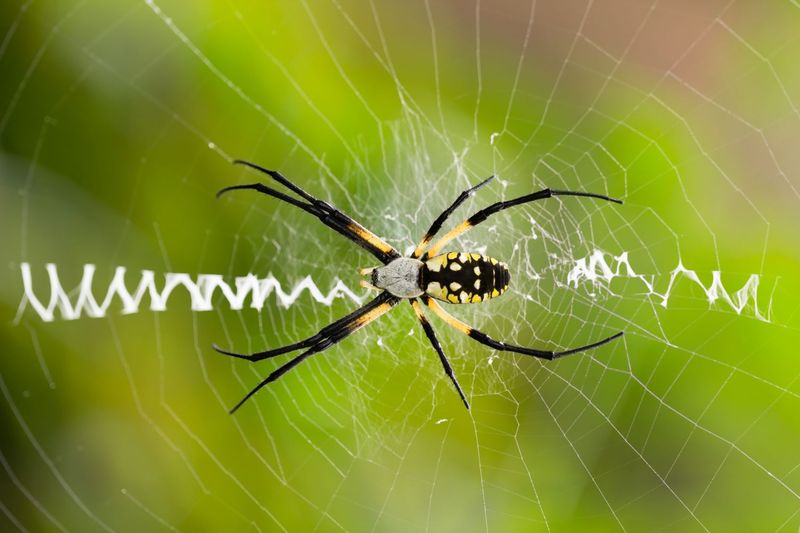
Garden Spiders are nature’s architects, crafting stunning orb webs that glisten in the Texas sun. Their striking yellow and black pattern makes them a garden favorite. These spiders are harmless to humans, focusing instead on catching insects in their elaborate traps.
Observing a Garden Spider at work offers insight into the precision of its web-spinning skills. Despite their size, these spiders are gentle and prefer a peaceful existence. Encouraging their presence can help control pest populations, making them beneficial to gardeners and nature lovers alike.
Orb Weaver Spider
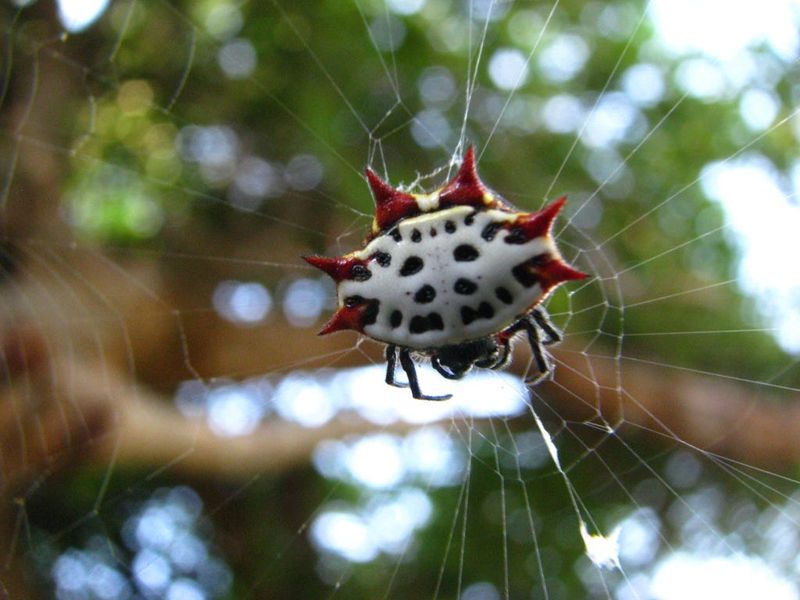
Among Texas’s arachnids, the Orb Weaver stands out for its artistic web-making skills. These spiders create intricate designs that capture both prey and admiration. Their varied colors and patterns add beauty to gardens across the state.
Though their webs may seem intimidating, Orb Weavers are non-aggressive and pose no threat to humans. Watching them work is a fascinating spectacle, as they diligently repair and maintain their creations. With their crucial role in the ecosystem, Orb Weavers remind us of the delicate balance in nature.
Tarantula Hawk Wasp
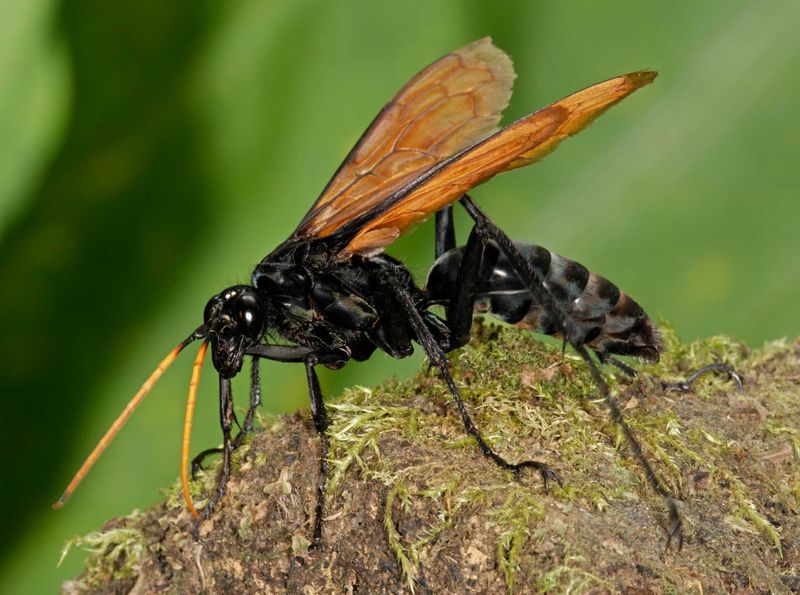
While not a spider, the Tarantula Hawk Wasp is a formidable adversary for Texas tarantulas. This vibrant insect, with its metallic blue body and striking orange wings, hunts tarantulas to provide for its young. Its sting is known to be incredibly painful, though not dangerous to humans.
Observing a Tarantula Hawk Wasp in action provides insight into its predatory prowess. Despite its fearsome reputation, it plays a vital role in controlling tarantula populations. The dance between predator and prey in the Texas deserts is a captivating display of nature’s complexity.
Crab Spider
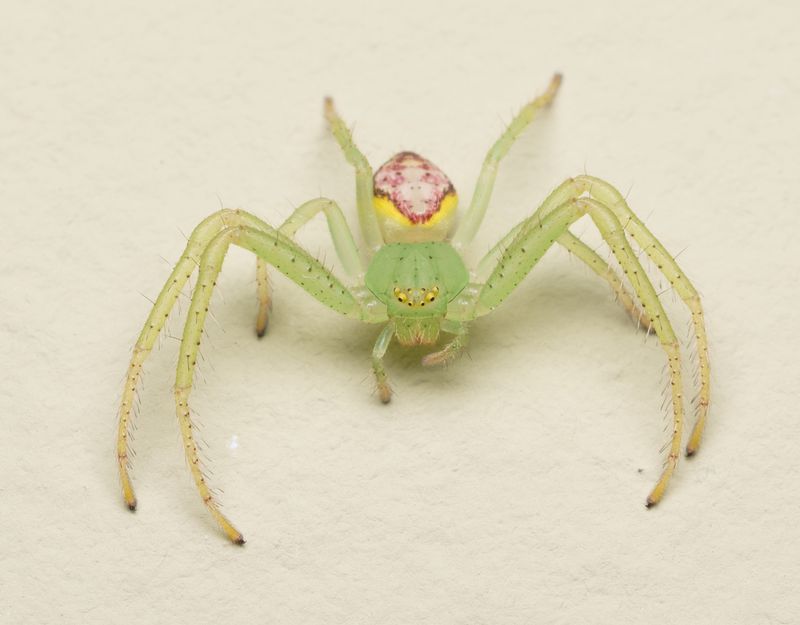
Crab Spiders are the masters of disguise in the Texas arachnid world. Their unique ability to change color allows them to blend seamlessly into their surroundings, particularly among flowers. This adaptation makes them skilled hunters, waiting patiently for unsuspecting prey.
These spiders pose no threat to humans and can often be found in gardens, contributing to pest control. Observing a Crab Spider reveals the art of camouflage in nature. Their presence is a reminder of the intricate strategies evolved in the world of predatory survival.
Daddy Long Legs
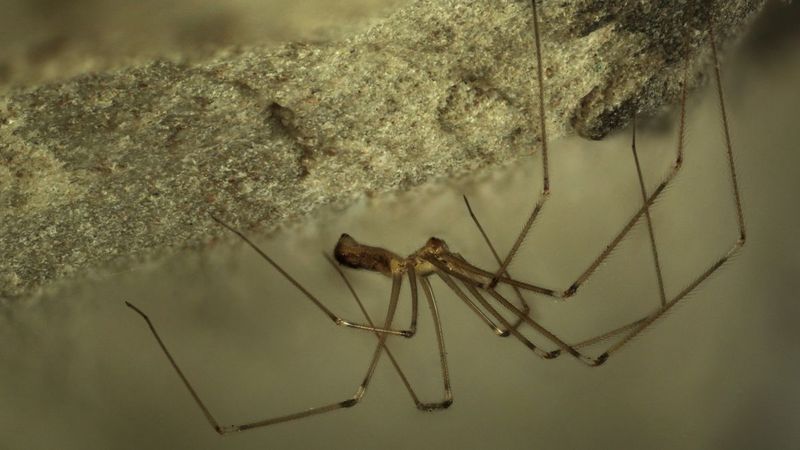
Known for their long, delicate legs and unique appearance, Daddy Long Legs are a common sight across Texas. Despite urban myths, they are not true spiders and are harmless to humans. Their gentle nature makes them interesting to observe as they traverse forest floors and gardens.
Their role as scavengers helps decompose organic material, aiding in nutrient recycling. Watching these creatures can be an intriguing experience, as their movements seem almost graceful. Appreciating the diversity of Texas arachnids includes understanding the gentle giants like Daddy Long Legs.
Green Lynx Spider
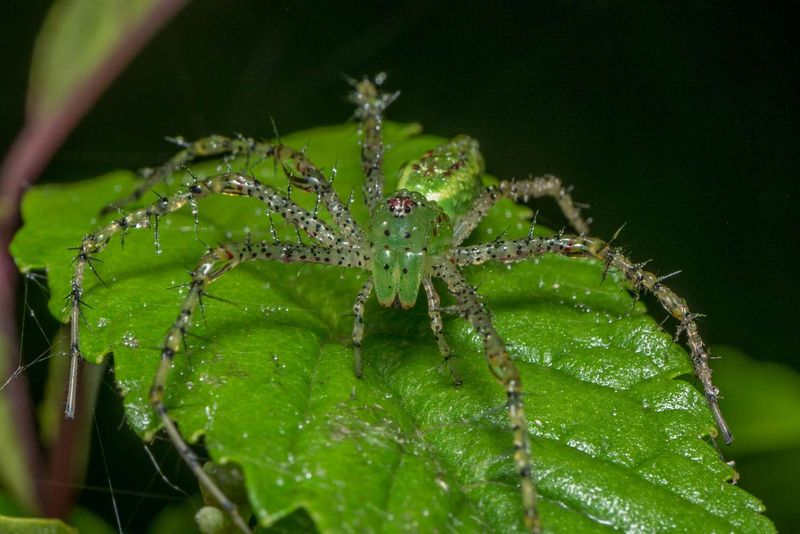
The Green Lynx Spider, with its vibrant green color, is a striking inhabitant of Texas gardens. This agile hunter is easily recognized by its long legs and distinctive appearance. Despite its predatory nature, it is harmless to humans and beneficial for controlling insect populations.
Watching a Green Lynx Spider in action is a testament to its agility and hunting prowess. Its presence in gardens is a boon for gardeners, keeping pest numbers in check. The vibrant appearance of this spider adds a touch of color and intrigue to the Texan landscape.
Woodlouse Spider
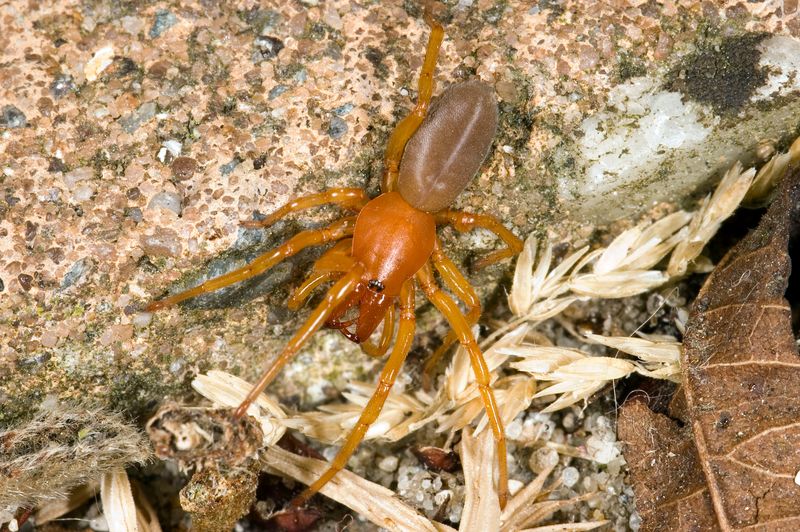
In the dim corners of Texas forests, the Woodlouse Spider hunts its preferred prey: woodlice. Distinguished by its reddish body and powerful jaws, this spider is a specialized predator. Its presence indicates a healthy ecosystem, as it aids in controlling woodlouse populations.
Though its appearance might be unsettling, the Woodlouse Spider poses no danger to humans. Observing its hunting behavior can be a fascinating insight into predator-prey dynamics. This spider’s role in nature’s balance highlights the intricate connections that sustain the environment.
Trapdoor Spider
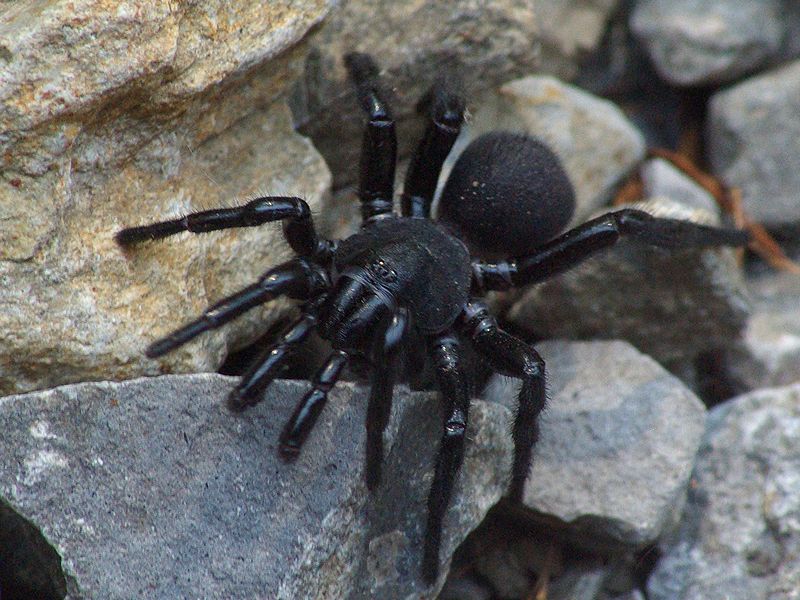
With a flair for the dramatic, the Trapdoor Spider is one of Texas’s more elusive arachnids. These spiders construct hidden burrows with camouflaged doors, lying in wait for unsuspecting prey. Their secretive lifestyle ensures they are rarely seen.
Though they might appear intimidating, Trapdoor Spiders are not dangerous to humans. They contribute to the ecosystem by controlling insect populations. Discovering a Trapdoor Spider’s burrow is like finding a hidden treasure, offering a glimpse into the ingenuity of nature’s architects.
Southern House Spider
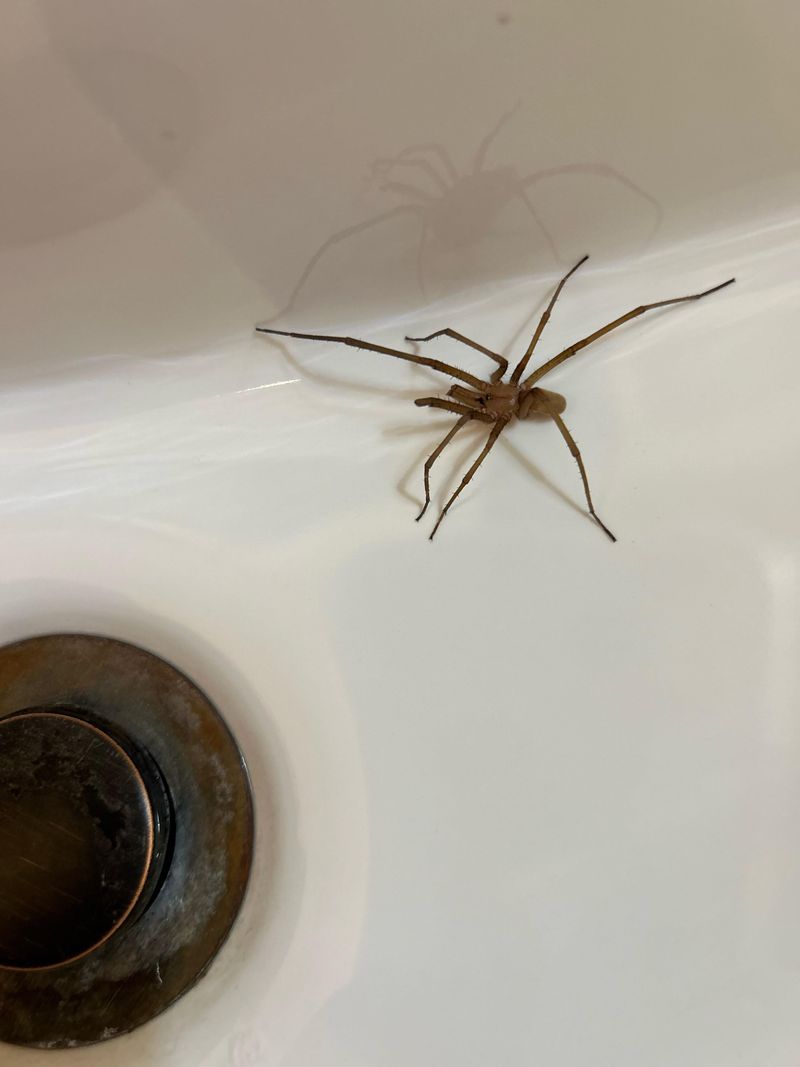
Southern House Spiders are common dwellers in Texas homes, seeking shelter in corners and crevices. Often mistaken for Brown Recluses, these spiders are harmless to humans. Their presence can be unsettling, but they help control insect populations indoors.
Observing a Southern House Spider reveals its adaptability to human environments. Despite their intimidating size, they prefer to avoid confrontation. Understanding and recognizing these spiders can alleviate unnecessary fears, fostering a peaceful coexistence within the spaces we share.
Huntsman Spider
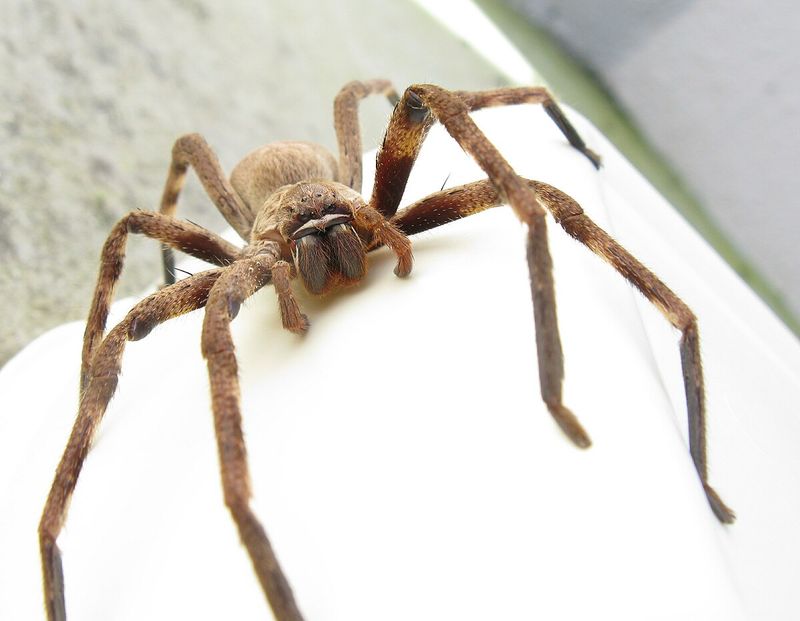
With its impressive size and speed, the Huntsman Spider is an awe-inspiring resident of Texas. Its flattened body allows it to scuttle effortlessly across tree bark and walls. Despite its size, this spider is relatively harmless to humans.
Huntsman Spiders are often found indoors, where they hunt for insects. Their presence can be startling, but they play a beneficial role in pest control. Observing a Huntsman Spider’s swift movements is a testament to its adaptability and survival skills, showcasing the wonders of the animal kingdom.
Long-Bodied Cellar Spider
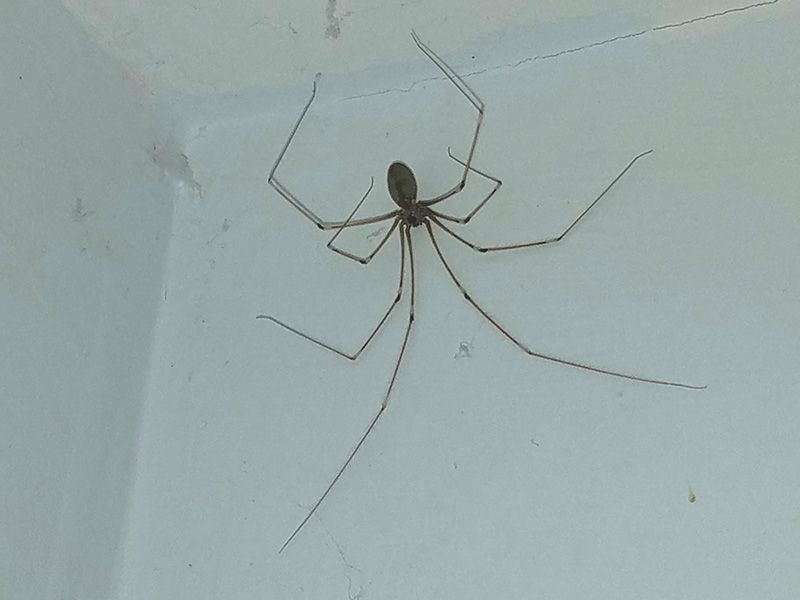
Long-Bodied Cellar Spiders, sometimes called “Daddy Long-Legs,” are frequent inhabitants of Texas cellars and basements. Their elongated bodies and long legs make them easily identifiable. Though often misunderstood, these spiders are harmless and aid in controlling other arachnid populations.
Their cobweb-like webs are common in dark corners, where they trap insects. Observing their web-building skills reveals the delicate art of survival. Embracing these gentle arachnids can help maintain a balanced ecosystem within our homes, highlighting the interconnectedness of all creatures.
Zebra Jumping Spider
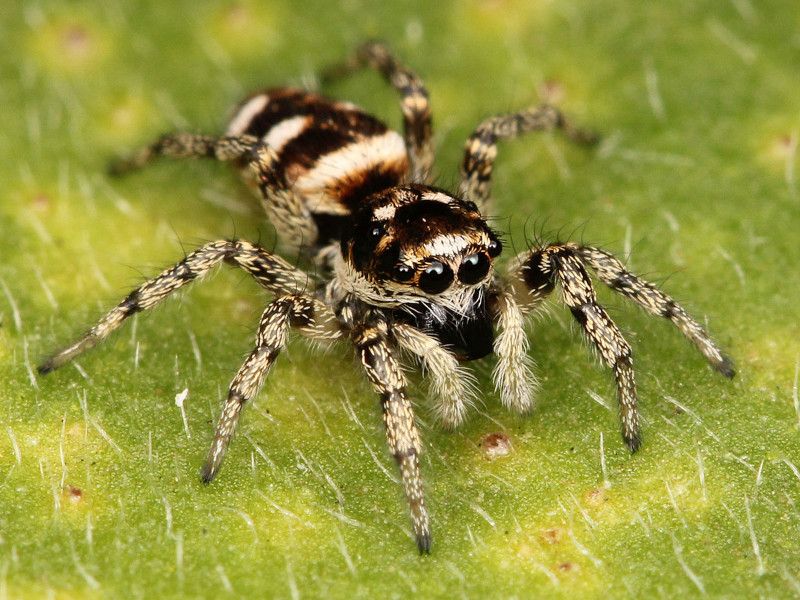
With a sense of style that rivals a fashion icon, the Zebra Jumping Spider sports bold black and white stripes. Its visual flair is matched by an impressive ability to leap great distances to catch its prey.
Although tiny, its curious nature and excellent vision make it a unique sight in Texas gardens. Rest assured, this spider is more interested in insects than humans.
Did you know? These spiders have a dance-like courtship display, adding a dash of drama to their everyday life.
Peacock Tarantula
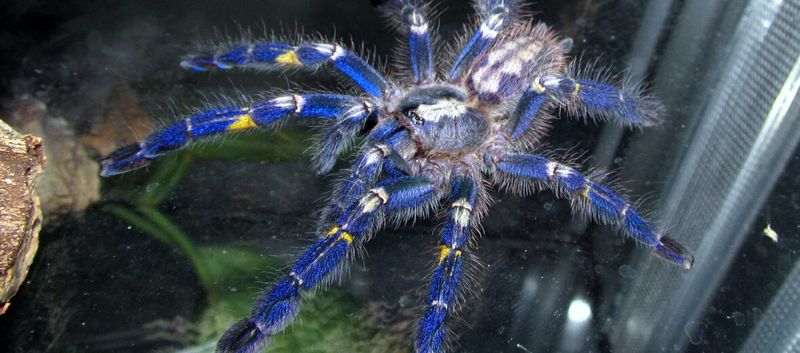
The Peacock Tarantula is the colorful diva of the spider world, flaunting iridescent blue and green hues. Found in the rocky terrains of West Texas, it prefers solitude and darkness.
This nocturnal spider is a visual spectacle, but it’s best admired from a distance. While its bite is not lethal, it’s certainly not pleasant.
Fun fact: The vibrant colors serve as a warning to predators, much like peacocks flaunt their tails. Despite its flashy appearance, the Peacock Tarantula is a shy creature at heart.

